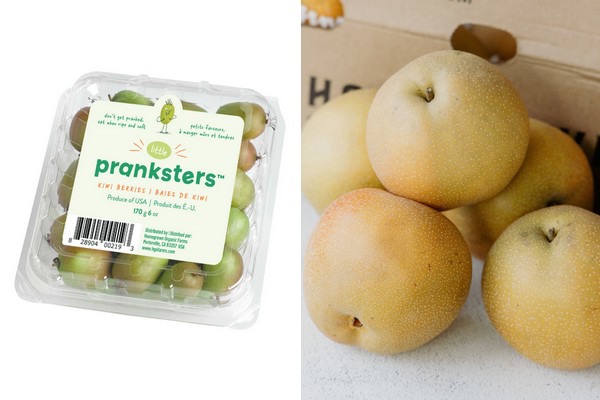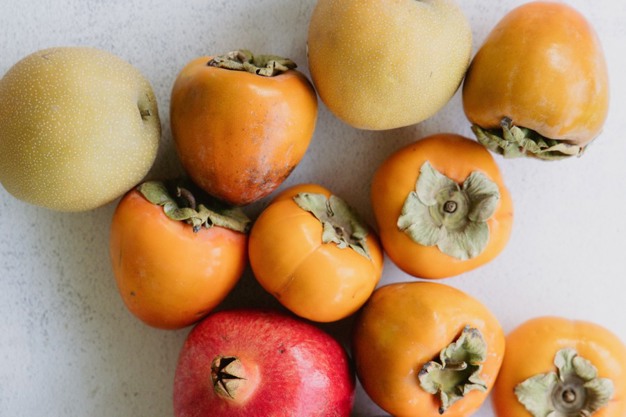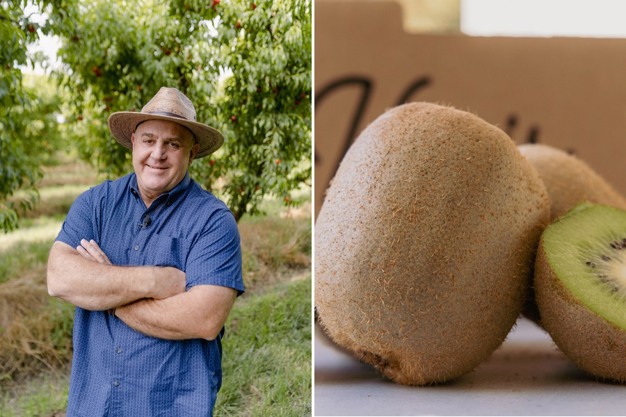Organic fall fruit programs in California are underway in various stages. "We had a hot summer and it had an effect on some of the fall fruit," says Stephen Paul, deciduous category director for Homegrown Organic Farms. "A lot of the growth happens in the summer and when you're in that type of high heat, trees will shut down and go into protection mode."
That means stunted growth on some fruit commodities. "The sizing profile of some of these items may be down one or two sizes. In pomegranates for example, there will probably be an abundance of sizes 30, 32, and 36 in the marketplace and I know retailers have turned their head away from those sizes in the past because they want 28s and larger. I'm not sure there will be a lot of those so I encourage retailers to rethink their sizing profiles to be realistic about having a steady supply of product in the organic side and probably the conventional as well."
Kiwi berries: This is a new commodity for Homegrown Organic Farms and there is good supply right now. "We'll have fruit available probably until close to the middle of October. It's a very fast-moving crop," says Paul, noting the crop is harvested in the Pacific Northwest.

Kiwi berries and Asian pears.
The predominant variety of the kiwi berry is the Tahi and both demand and pricing are good for the berries. "We're trying to keep it real in the marketplace as to what's good for the grower and what's good for the retailer," says Paul.
To help move product and educate consumers about how and when to eat the kiwi berries, last month HGO introduced its branded "Little Pranksters" berries. (The "prank" is consumers eating the berries while they're still firm and sour rather than when they soften and are sweeter.)
Asian pears: This commodity got a late start this season. "Our Asian pear crop had some challenges as many crops did here in California with late warm rains. That brought pest and fungal pressures and it lowered packouts," says Paul, estimating that the Asian pear supply is down 60 percent from the previous year's crops. "The acreage is there but the fruit had issues this year when it was set and with overall volume."
That said, the sizing of the fruit is still good and later varieties fared better. The Hosui variety for instance was affected more than the Shinko variety. The latter is being harvested right now.
All of this means that demand will exceed the supply of Asian pears and in turn, lead to high markets.
 Asian pears, persimmons, and pomegranates.
Asian pears, persimmons, and pomegranates.
Pomegranates: "The early Foothill variety has already started in some cases. Then we'll move into the regular Wonderful varieties," says Paul. "It too is not a heavy crop but more of an average one, maybe a bit on the lighter side of an average crop. However, there will be plenty of fruit."
Harvest will begin on pomegranates likely in the second week of October and will go through Thanksgiving, if not slightly past it.
Persimmons: Persimmons will start at the same time as pomegranates and run in the same window of time. Like pomegranates, the sizing will likely be affected on persimmons. "The crop looks better than normal but what's yet to be determined on this crop is just what type of heat damage or sunburn that we're dealing with. We won't know until we start packing it," says Paul, adding that there will still be program availability through this season.
Overall he estimates it will have at least a similar volume to last year, if not slightly more.
Kiwis: Fruit won't likely hit the market until the last week of October or the first week of November. "The crop looks pretty good though again, it's the same situation with the heat and the sizing we're seeing on the organic side. The profile is a little smaller," says Paul.
 Paul says kiwis won't likely hit the market until the last week of October or the first week of November.
Paul says kiwis won't likely hit the market until the last week of October or the first week of November.
Homegrown Organic Farms will have more availability on sizes smaller than 27s and peak sizing is anticipated to be 30/33s.
"I'm hoping the market will be conscientious of that knowing that the growers will need help. When we have heat and weather circumstances like this, it's almost out of the grower's hands because what this heat does to the tree is something the growers can't take care of. All they can do is keep the fields wet and the trees hydrated," says Paul.
 For more information:
For more information:
Elise Smith
Homegrown Organic Farms
Tel.: (+1) 559-306-1777
[email protected]
www.hgofarms.com
